AMD Radeon R9 Nano Review
Small, fast and pricey — that’s how AMD wants to establish a whole new product category. But does the Radeon R9 Nano have the performance to back up its price tag?
Results: Middle-earth: Shadow Of Mordor And Thief
Middle-earth: Shadow of Mordor
The AMD graphics cards dominate the field across all resolutions in this benchmark. Interestingly, the Radeon R9 Nano is inched out by the 390X at 4K.
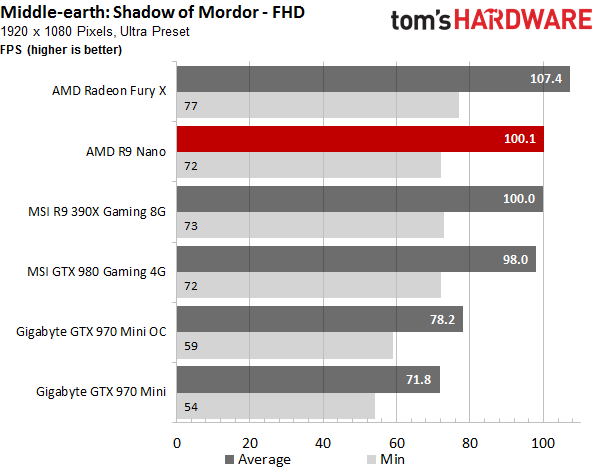
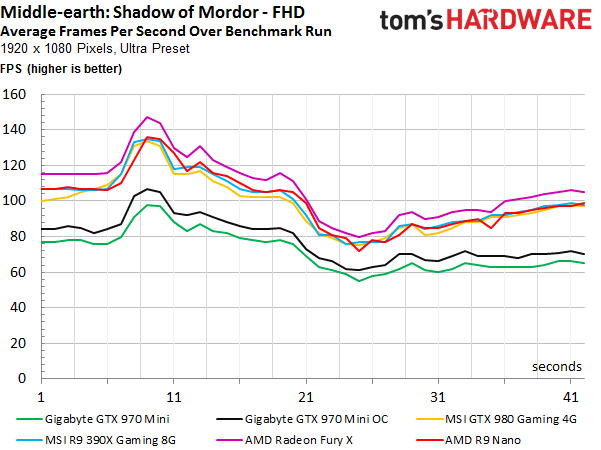
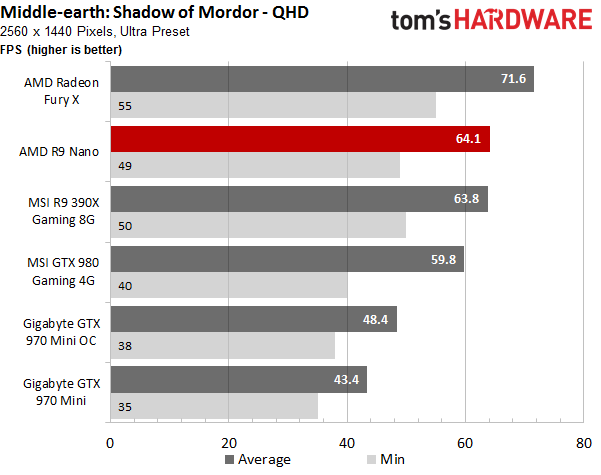
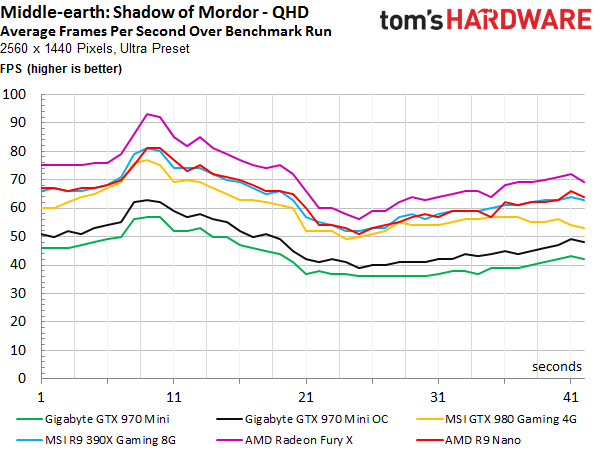
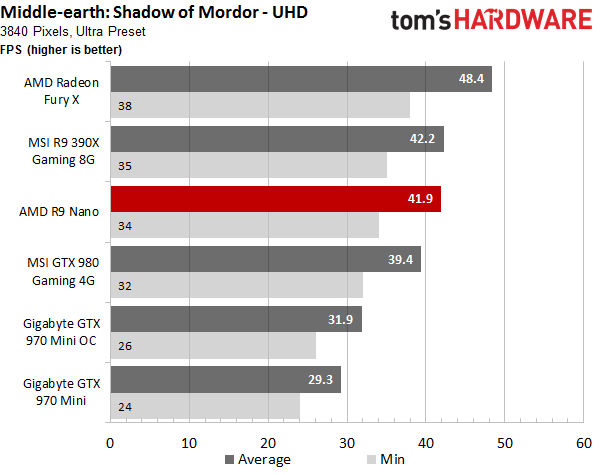
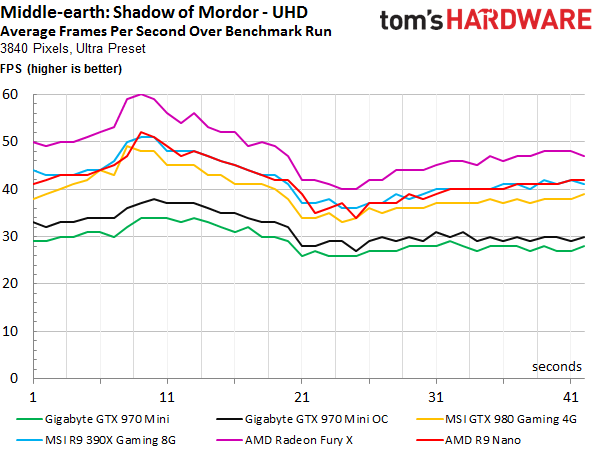
There’s only one short stretch of the frame time curve where the GeForce GTX 980’s results fluctuate briefly. This can be replicated.
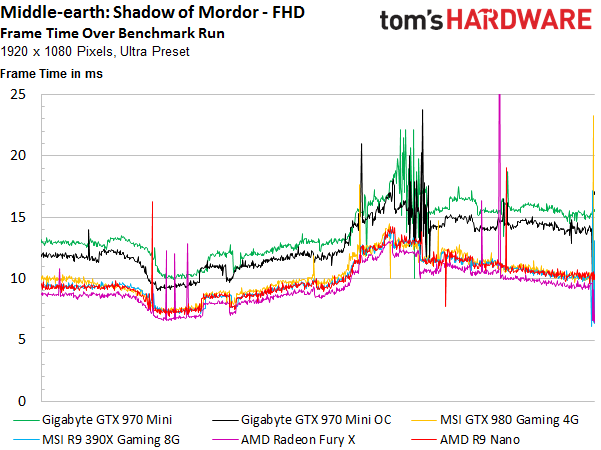
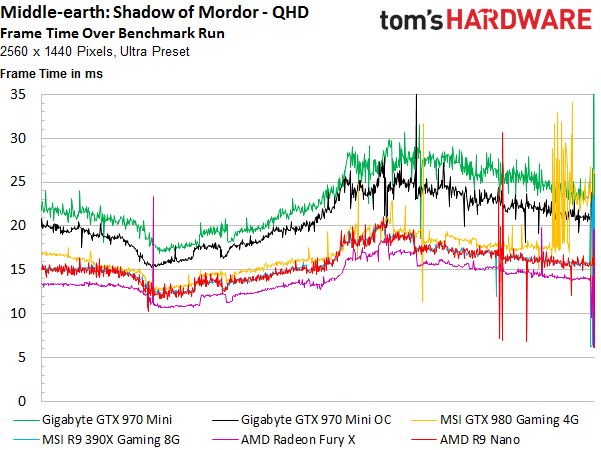
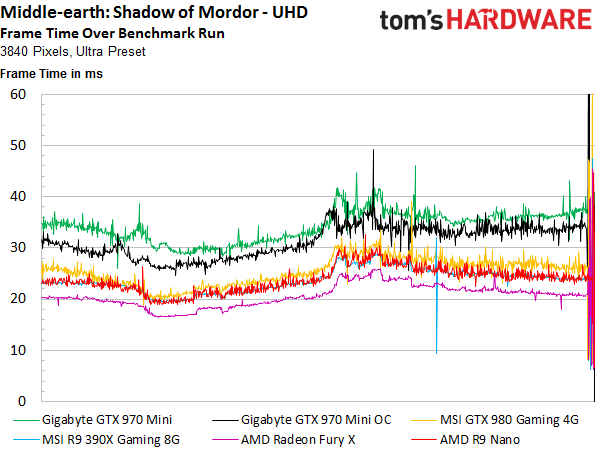
Even in the normalized view, there are barely any deviations. It’s interesting to see how the AMD and Nvidia graphics cards differ in where in the benchmarks they show strengths and weaknesses. It’s easy to see where the individual graphics cards do well (negative, faster) or not (positive, slower) compared to their own averages.
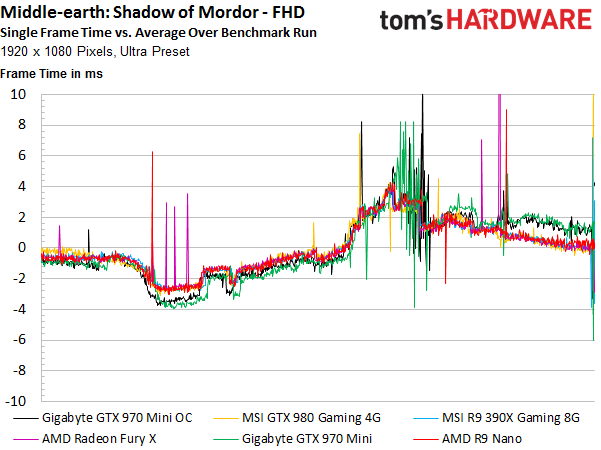
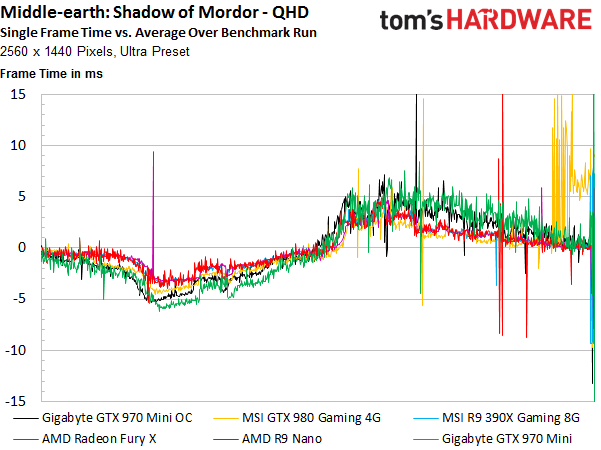
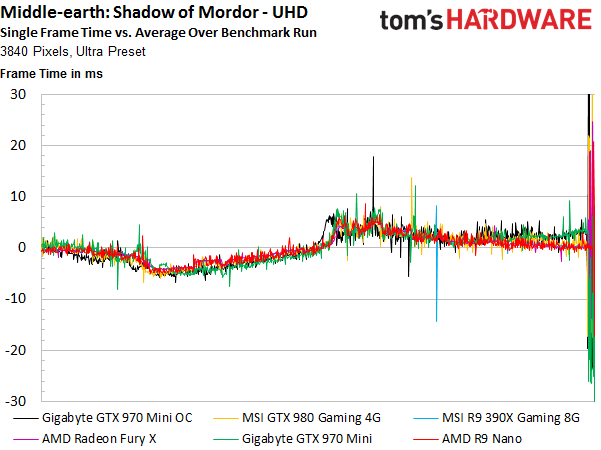
The two benchmark runs with the GeForce GTX 970 Mini at stock and overclocked frequencies don’t just look less smooth, but the graph bears this observation out as well. Jumps between the frames show when the card gets stuck. We’d also like to direct your attention to the GeForce GTX 980 and its yellow curve for another look at its brief fluctuation.
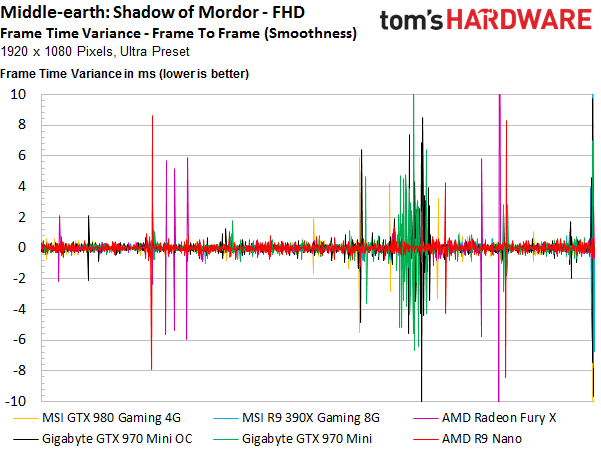
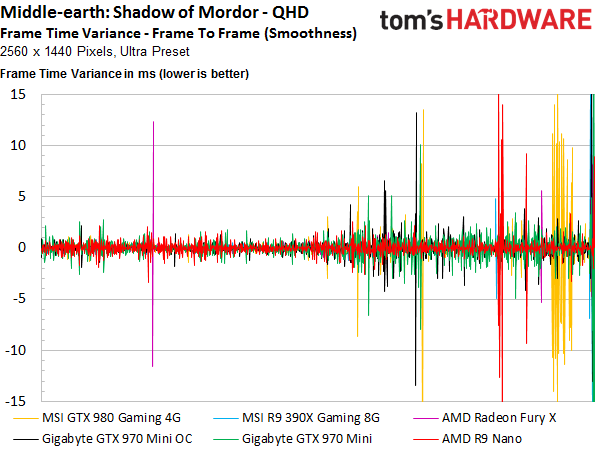
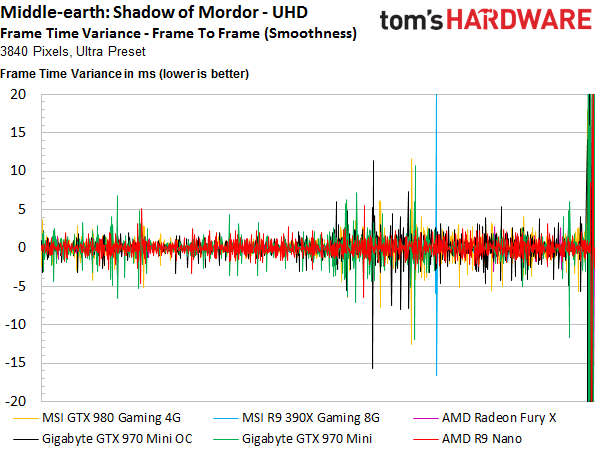
Overall, Nvidia's GeForce GTX 970 Mini (OC) manages to stay just above the 30 FPS mark. But this level of performance is still nothing to write home about. To achieve a smooth gaming experience, either the resolution or the graphics settings need to be decreased.
Thief
Full HD is the only resolution where AMD's Radeon R9 Nano loses to the factory-overclocked GeForce GTX 980. The Nano takes the lead from QHD and up. Nvidia’s GeForce GTX 970 Mini (OC) just isn’t powerful enough for Ultra HD.
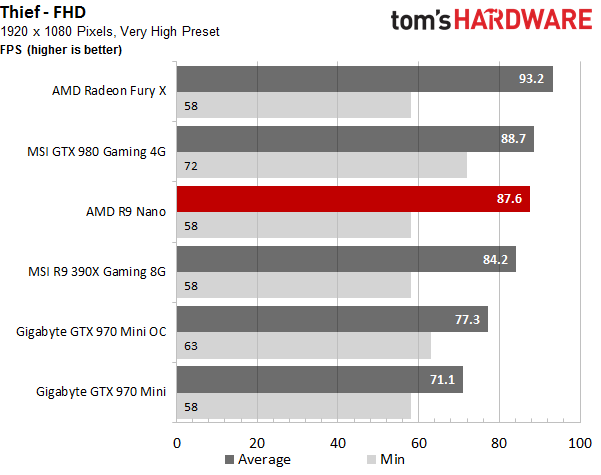
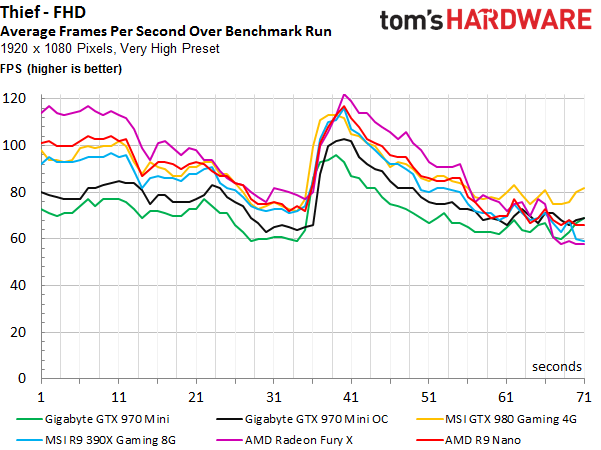
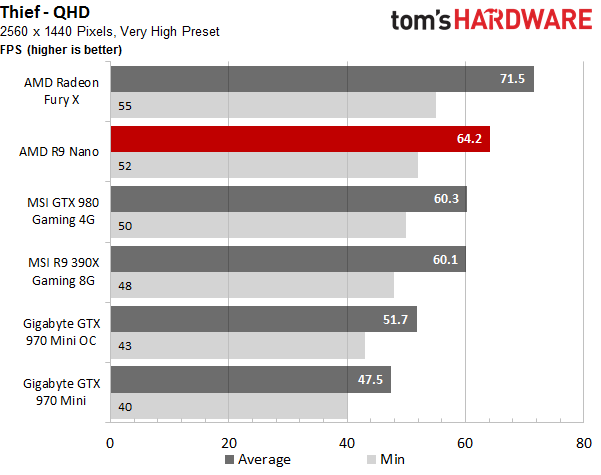
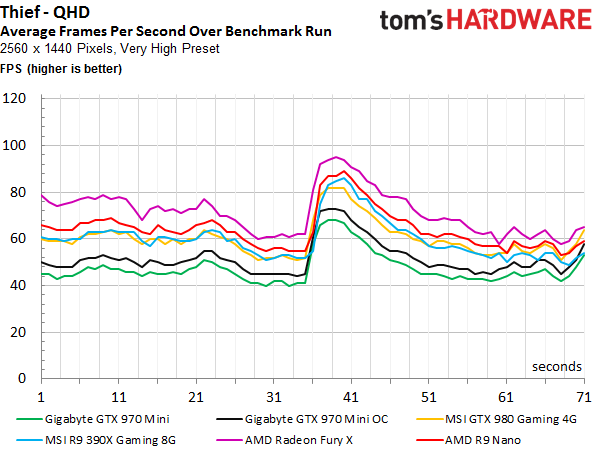
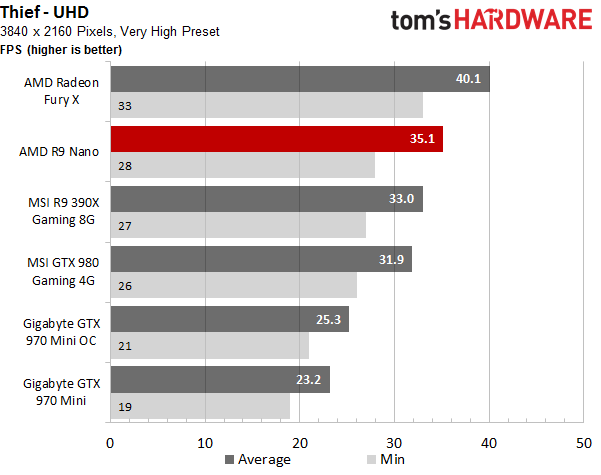
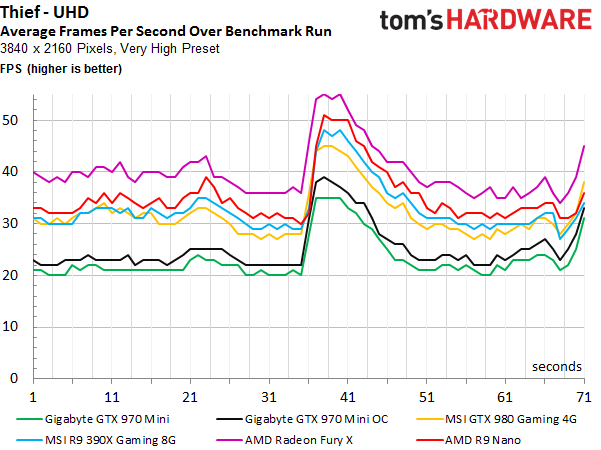
The frame render time curves show how the differences between cards increase as the resolution goes up.
Get Tom's Hardware's best news and in-depth reviews, straight to your inbox.
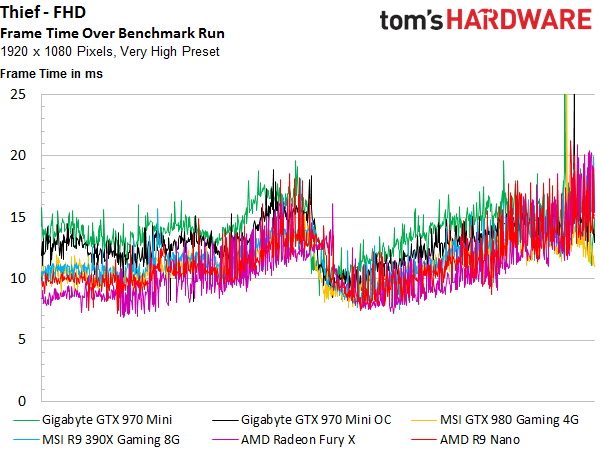
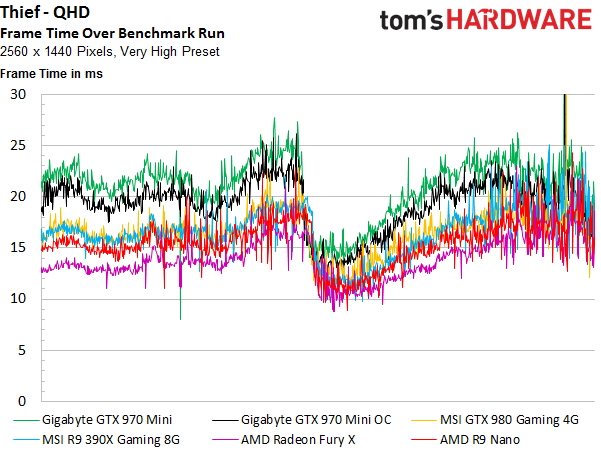
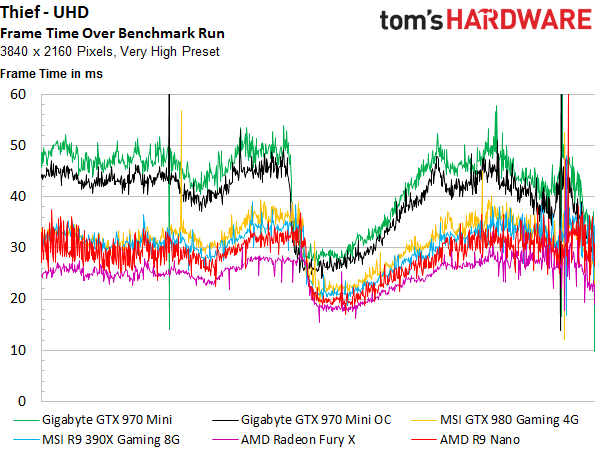
After normalizing and superimposing the curves, it becomes clear where the GeForce GTX 970 Mini (OC) runs into trouble at UHD.
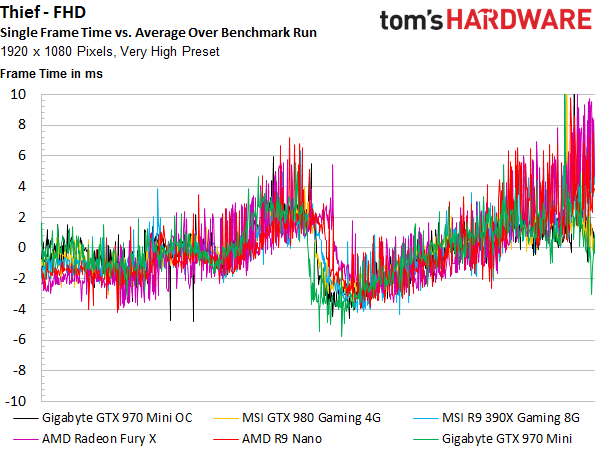
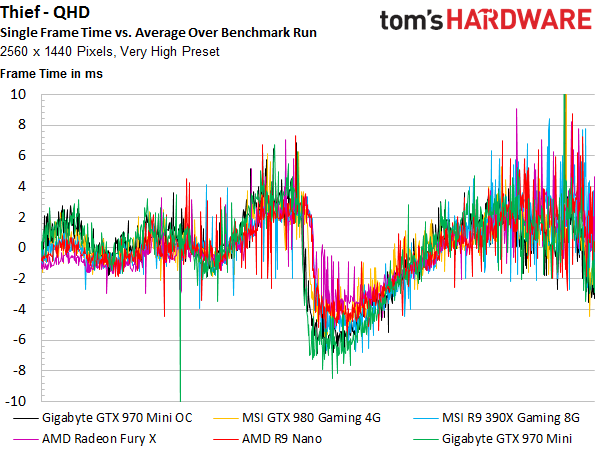
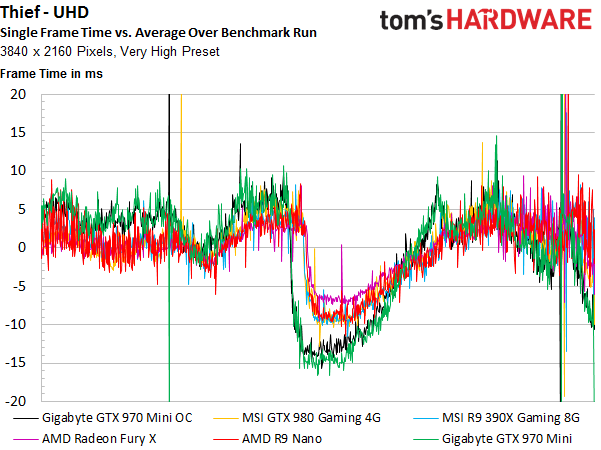
Thief is one of the games in our benchmark suite that pushes graphics cards to consume a lot of power. This doesn’t explain why AMD's Radeon R9 Fury X at Full HD demonstrates the worst frame time variance in this benchmark. The card actually improves at higher resolutions, where the 390X doesn’t do as well.
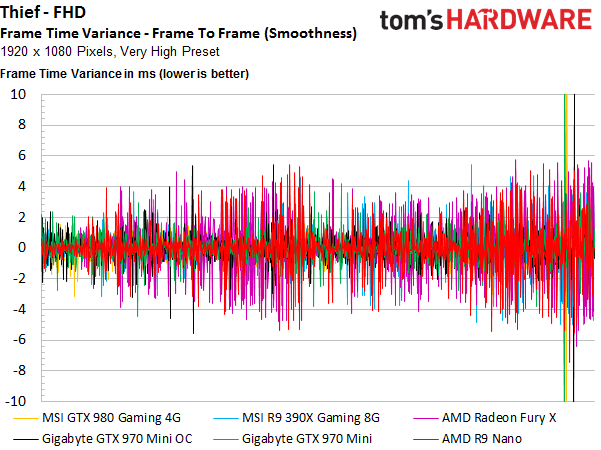
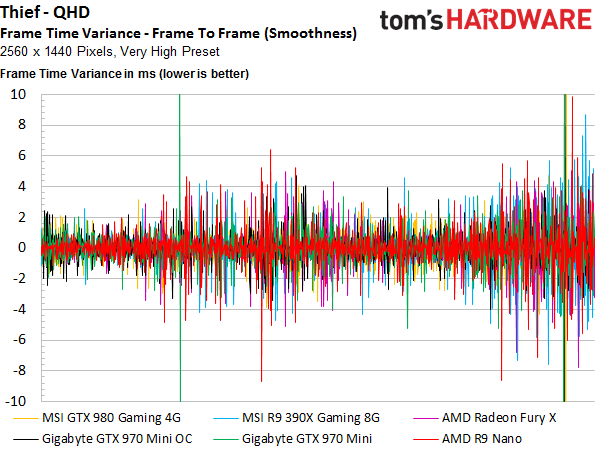
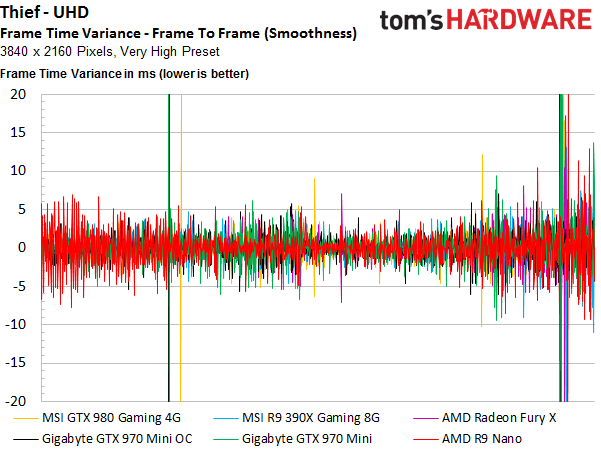
Be this as it may, the bottom line is that the hard power consumption limit doesn’t have the same negative impact on the frame time variances that it had in Metro Last Light.
Current page: Results: Middle-earth: Shadow Of Mordor And Thief
Prev Page Results: Tomb Raider And Battlefield 4 Next Page Results (DirectX 12): Ashes Of The Singularity
Igor Wallossek wrote a wide variety of hardware articles for Tom's Hardware, with a strong focus on technical analysis and in-depth reviews. His contributions have spanned a broad spectrum of PC components, including GPUs, CPUs, workstations, and PC builds. His insightful articles provide readers with detailed knowledge to make informed decisions in the ever-evolving tech landscape
-
Eximo Looks like the table had a hiccup. GTX970 (OC) is showing a lot of the numbers from the R9-390X, and maybe a few numbers from the 980 column.Reply -
-Fran- It is a nice card and I agree, but... It's not USD $650 nice.Reply
This card is a very tough sell for AMD, specially since ITX cases that can house current long cards are not hard to find or weird enough to make short cards a thing.
It's nice to see it's up there with the GTX970 in terms of efficiency, since HTPCs need that to be viable and the card has no apparent shortcomings from what I could read here.
All in all, it needs to drop a bit in price. It's not "650 nice", but making it "~500 nice" sounds way better. Specially when the 970 mini is at 400.
Cheers! -
sna no HDMI2.0 in itx small system near the 4k TV is unforgivable AMD , what were you thinking?Reply -
sna Reply16605176 said:It is a nice card and I agree, but... It's not USD $650 nice.
This card is a very tough sell for AMD, specially since ITX cases that can house current long cards are not hard to find or weird enough to make short cards a thing.
It's nice to see it's up there with the GTX970 in terms of efficiency, since HTPCs need that to be viable and the card has no apparent shortcomings from what I could read here.
All in all, it needs to drop a bit in price. It's not "650 nice", but making it "~500 nice" sounds way better. Specially when the 970 mini is at 400.
Cheers!
well this card is for the smallest case ... not the easy to find huge long itx case.
I personaly find long itx cases useless ... they are very near to Matx case in size .. and people will pick up MATX ovet ITX any time if the size is the same.
BUT for 170mm long card ? this is a winner.
the only thing killing this product is the lack of HDMI2.0 which is very important for itx .. ITX are the console like PC near the tv.
-
heffeque Replyno HDMI2.0 in itx small system near the 4k TV is unforgivable AMD , what were you thinking?
I guess that they were thinking about DisplayPort? -
Nossy I'd go with the 950 GTX for a mini ITX build for a 1080pgaming/4k video HTPC.Reply
For a $650 bucks video card. I'd go with a 980TI and use a Raven RVZ01 if I want an ITX build with performance.